When it comes to premium cuts of beef, two names often stand out: Ribeye and Sirloin. Both are known as high-quality parts of the cow, yet few people can clearly explain what sets them apart.
They both come from the back area of the cow, but their flavor, texture, and ideal cooking styles are quite different. In this article, we’ll explore the key differences between these two famous cuts and explain why Kuro5 focuses on the ribeye – a cut that reveals the full potential of Japanese Wagyu yakiniku.
What Is Ribeye?
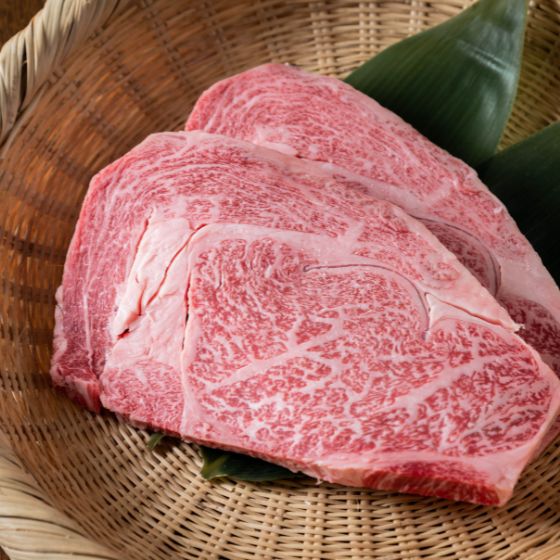
The Ribeye (or Rib Roast) sits between the Chuck (shoulder) and the Sirloin, along the cow’s rib section. It’s known for its perfect balance between tenderness and rich marbling.
The ribeye isn’t as fatty as sirloin, nor as firm as the shoulder. It’s right in the middle – juicy, flavorful, and full of character.
Because the ribeye is a large section, it can be divided into smaller parts with their own personalities and flavors:
- Kaburi: The outer cap with rich fat. Juicy, aromatic, and deeply flavorful when grilled over charcoal.
- Maki: The marbled center. Soft, buttery, and melts in your mouth — the essence of Wagyu luxury.
- Rib Shin (Rib Core): The tender center section. Subtle and elegant, perfect for sukiyaki or shabu-shabu.
- Naka-Ochi: The meat between the bones. Intense umami and beefy richness, ideal for yakiniku.
- Enpitsu: A narrow, elongated piece where lean meat and fat form a beautiful contrast.
This variety within one single cut makes the ribeye incredibly fascinating. It offers a “spectrum of flavors” – each part expressing a different balance of fat, tenderness, and aroma.
What Is Sirloin?
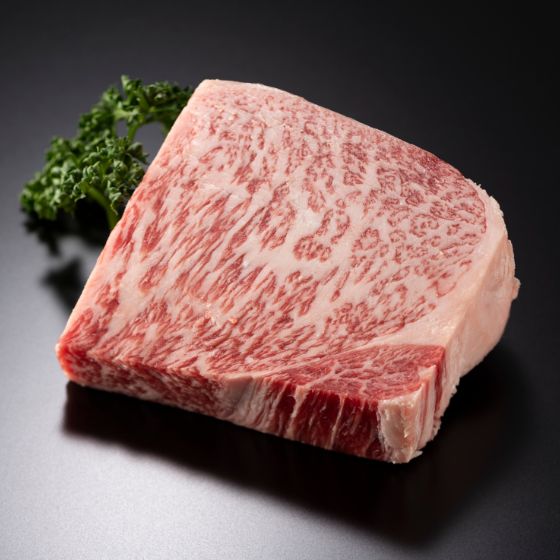
The Sirloin is located just behind the ribeye, around the cow’s lower back and loin area. The name “Sir” comes from the European honorific, reflecting its long reputation as a noble steak cut.
Sirloin has fine muscle fibers and just enough fat to create a soft, buttery texture. When cooked as a steak, it’s tender, aromatic, and full of mild sweetness.
However, when used for yakiniku, sirloin’s heavier fat content can sometimes feel a bit rich for some guests. It’s a beautiful cut for classic steak dining, but in yakiniku — where small portions are grilled over charcoal – the balance of lean and fat in the ribeye tends to shine more.
Ribeye vs Sirloin – The Key Differences
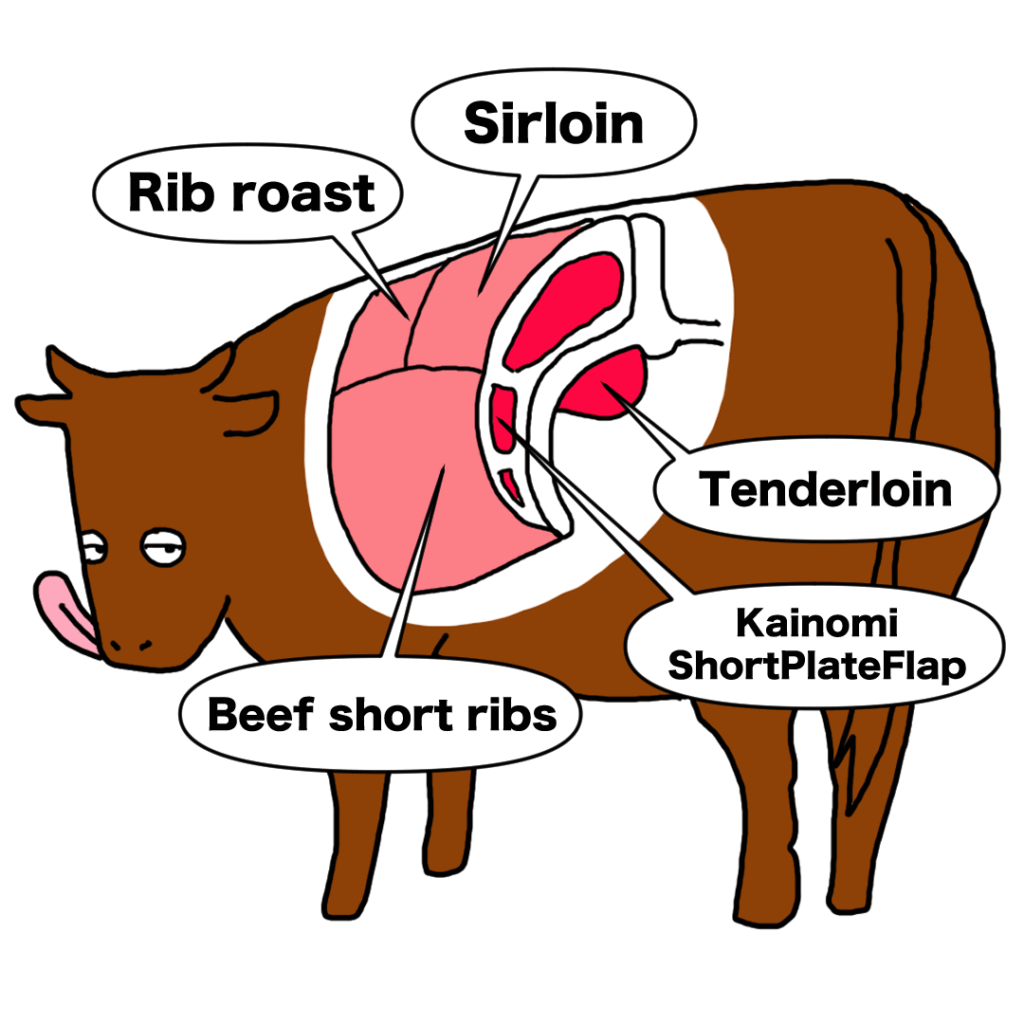
- Position: Ribeye is closer to the shoulder; sirloin is closer to the lower back.
- Texture: Ribeye is juicy and slightly springy; sirloin is soft and fine-grained.
- Fat Quality: Ribeye’s fat is aromatic and savory; sirloin’s fat is creamy and rich.
- Flavor Profile: Ribeye balances lean and fat beautifully; sirloin emphasizes fat-driven sweetness.
In short, the ribeye is the more versatile and balanced cut, while the sirloin is the luxurious, fat-forward steak cut known for richness.
Why Kuro5 Chooses the Ribeye
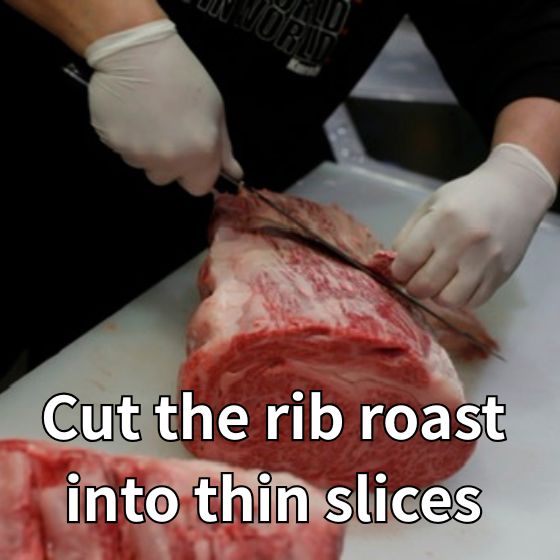
At Kuro5, we have always believed that the ribeye represents the true heart of yakiniku. It’s the one cut that allows you to experience both the richness of fat and the depth of lean flavor — all in perfect harmony.
Kuro5 does not buy whole cows; instead, we carefully select only the highest-grade Wagyu ribeye. Then, our chefs separate each section – Kaburi, Maki, Rib Shin, Naka-Ochi – and adjust the cut, thickness, and seasoning to match its individual character.
For example:
- Maki: Grilled with a sweet soy-based tare to enhance its melting fat.
- Rib Shin: Lightly salted and quickly seared to bring out its natural sweetness.
- Naka-Ochi: Served as “Special Ribeye Kalbi,” combining rich meat juice and smoky charcoal aroma.
Even within the same ribeye, the taste changes dramatically depending on how it’s sliced and grilled. That versatility is exactly why Kuro5 celebrates this cut above all others.
Kuro5’s Ribeye – The Star of Yakiniku

At Kuro5, the ribeye can take on many forms: Sometimes it’s thick-cut like a steak, grilled slowly for depth. Other times, it’s sliced thin and seared over charcoal for a delicate, melt-in-your-mouth bite.
Because the ribeye offers a perfect balance between red meat and fat, it fits every yakiniku style. It’s the cut that adapts to every guest’s taste – from those who love the melt of marbling to those who prefer the strength of lean beef.
By dividing the ribeye into its individual sections and grilling each to perfection, Kuro5 lets guests experience the full range of Wagyu flavor in a single meal. From the first juicy bite to the smoky finish, every piece tells its own story.
Conclusion — Ribeye: The Most Enjoyable Cut for Yakiniku
Both ribeye and sirloin are prized cuts in the world of Wagyu. But when it comes to diversity, texture, and depth of flavor, the ribeye stands above the rest.
It’s a cut that can be appreciated in many forms – thin, thick, fatty, or lean — and each way reveals a new side of Wagyu’s beauty. At Kuro5, every step from selection to slicing and grilling is designed to let the ribeye shine at its best.
If you want to experience the full character of Japanese Wagyu yakiniku, start with the ribeye — and discover why it has earned its place as the true star of Kuro5.
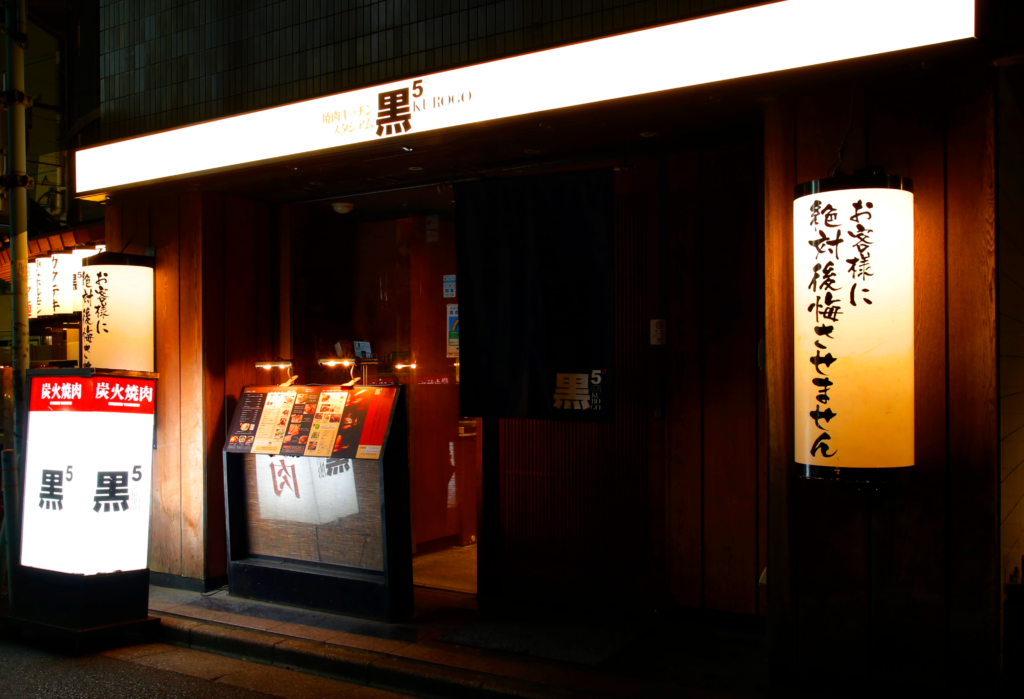
Wagyu Yakiniku Kuro5
IKEBUKURO Main Restrant
1F Shima 100 building ,2-46-3, Ikebukuro, Toshima-ku , Tokyo 171-0014
https://en.kuro5.net/restaurant/honten
Wagyu Yakiniku Kuro5
IKEBUKURO East Exit Restrant
2F Need Building, 1-42-16 Higashi-Ikebukuro, Toshima-ku, Tokyo 170-0013
https://en.kuro5.net/restaurant/higashiguchi
Wagyu Yakiniku KURO5
Kabukicho
1F Sankei Building, 2-21-4 Kabukicho, Shinjuku-ku, Tokyo
https://en.kuro5.net/restaurant/kabukicho
Official Instagram: @kuro5yakiniku





